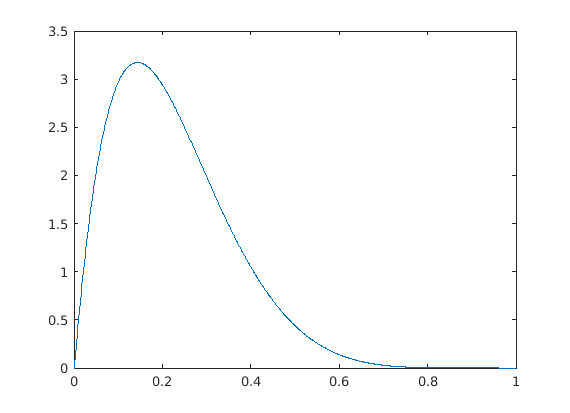Graphs of the beta density
Here are graphs of the beta density for different values of the parameters. From the graphs you can imagine how changing the parameters would allow you to fit a beta density to a wide variety of data sets. In fact, MATLAB has a command betafit designed to do that.
Contents
I begin by creating a vector of  values to plot, with 1000 equally spaced points in [0,1].
values to plot, with 1000 equally spaced points in [0,1].
X = linspace(0,1,1000);
The command betapdf(X,a,b) computes the values of the beta density with parameters  and
and  at the points of
at the points of  . I'll use that to plot. After each plot I give two commands to change the tick marks on the
. I'll use that to plot. After each plot I give two commands to change the tick marks on the  axis to go from 0 to 1 instead of 0 to 1000 (the values of
axis to go from 0 to 1 instead of 0 to 1000 (the values of  ).
).
a=b=1.5
plot(betapdf(X,1.5,1.5))
ax=gca;
ax.XTickLabel = {'0','0.2','0.4','0.6','0.8','1'};
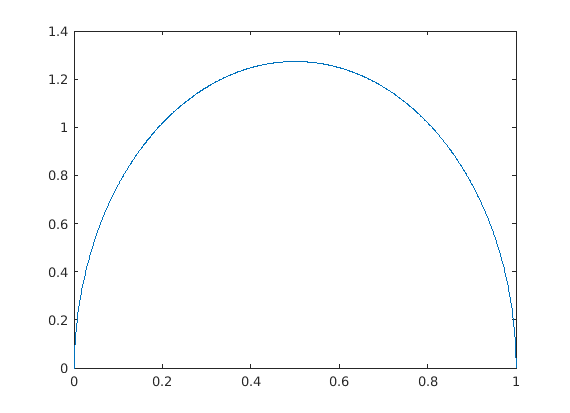
a=b=0.5
plot(betapdf(X,0.5,0.5))
ax=gca;
ax.XTickLabel = {'0','0.2','0.4','0.6','0.8','1'};
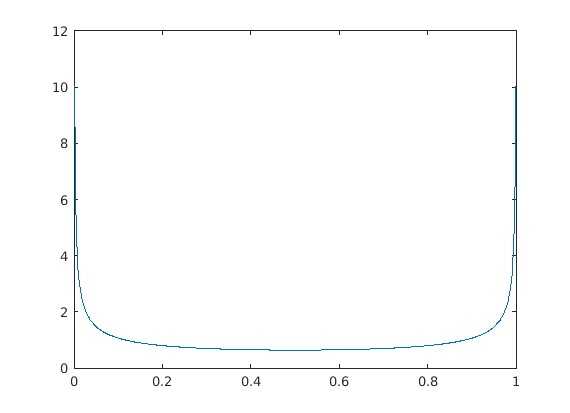
a=b=0.75
plot(betapdf(X,0.75,0.75))
ax=gca;
ax.XTickLabel = {'0','0.2','0.4','0.6','0.8','1'};
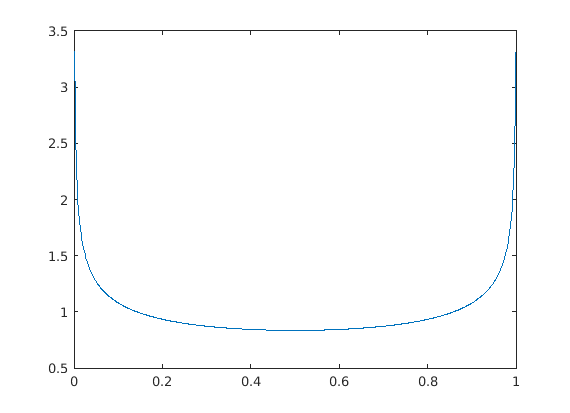
a=b=2.5
plot(betapdf(X,2.5,2.5))
ax=gca;
ax.XTickLabel = {'0','0.2','0.4','0.6','0.8','1'};
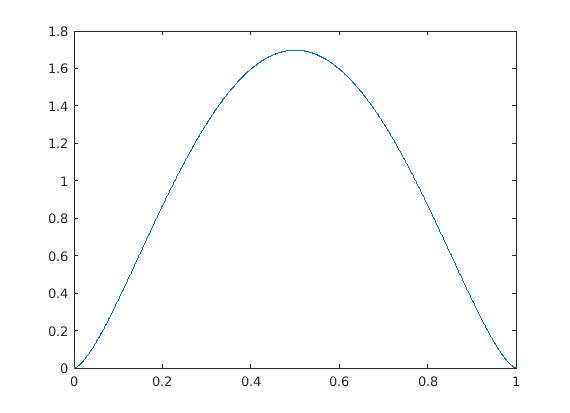
a=0.5, b=2.5
plot(betapdf(X,0.5,2.5))
ax=gca;
ax.XTickLabel = {'0','0.2','0.4','0.6','0.8','1'};
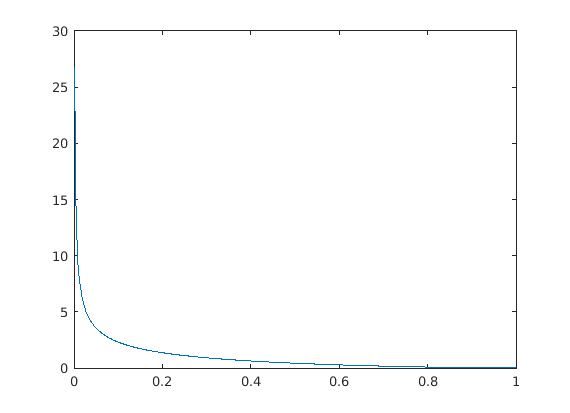
a=2.5, b=0.5
plot(betapdf(X,2.5,0.5))
ax=gca;
ax.XTickLabel = {'0','0.2','0.4','0.6','0.8','1'};
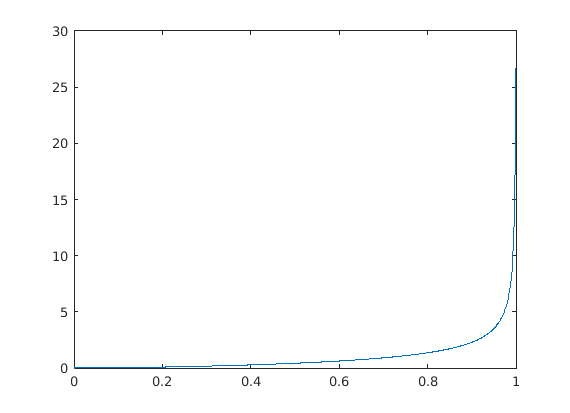
a=0.75, b=0.5
plot(betapdf(X,0.75,0.5))
ax=gca;
ax.XTickLabel = {'0','0.2','0.4','0.6','0.8','1'};
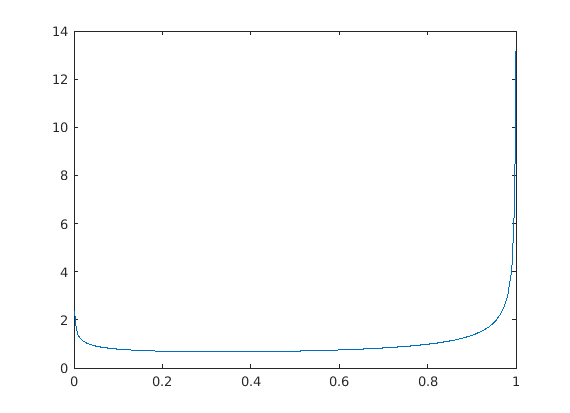
a=b=3.5
plot(betapdf(X,3,5));
ax=gca;
ax.XTickLabel = {'0','0.2','0.4','0.6','0.8','1'};
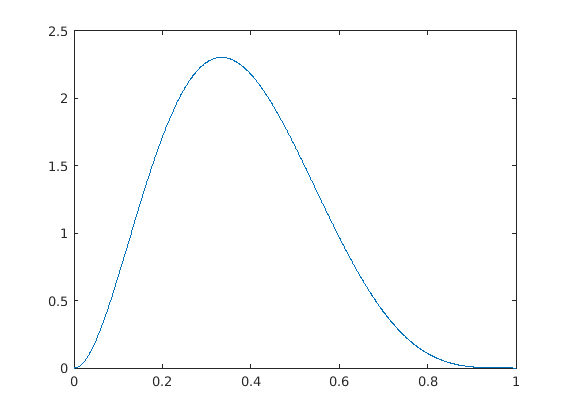
a=b=5
plot(betapdf(X,5,5));
ax=gca;
ax.XTickLabel = {'0','0.2','0.4','0.6','0.8','1'};
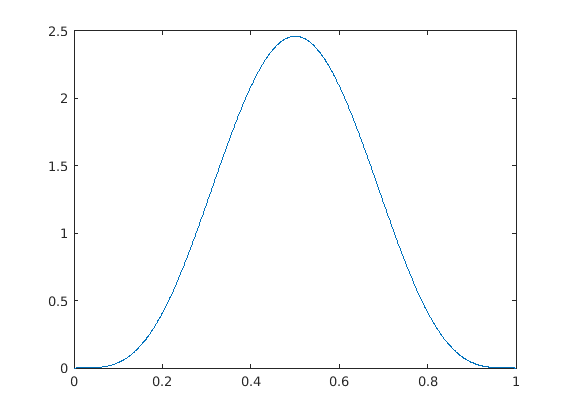
a=5, b=3
plot(betapdf(X,5,3))
ax=gca;
ax.XTickLabel = {'0','0.2','0.4','0.6','0.8','1'};
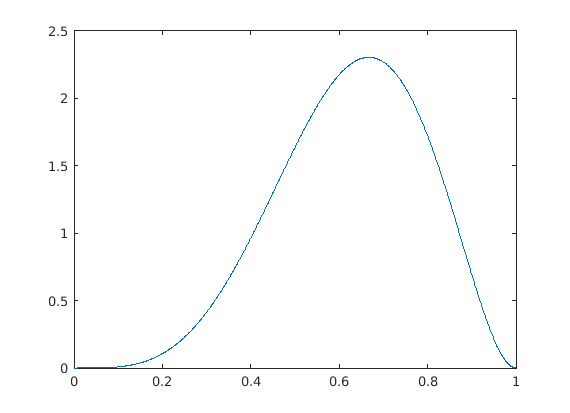
a=5, b=1.5
plot(betapdf(X,5,1.5))
ax=gca;
ax.XTickLabel = {'0','0.2','0.4','0.6','0.8','1'};
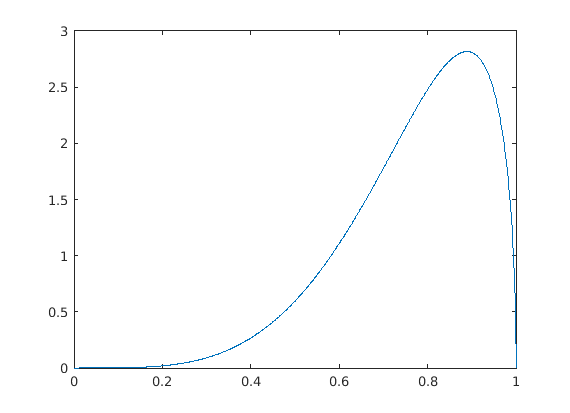
a=7, b=2
plot(betapdf(X,7,2))
ax=gca;
ax.XTickLabel = {'0','0.2','0.4','0.6','0.8','1'};
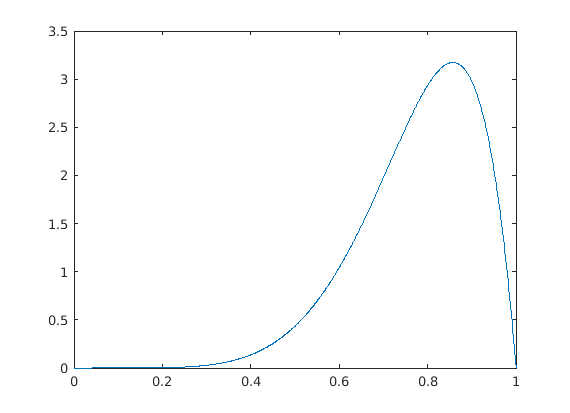
a=2, b=7.5
plot(betapdf(X,2,7))
ax=gca;
ax.XTickLabel = {'0','0.2','0.4','0.6','0.8','1'};
